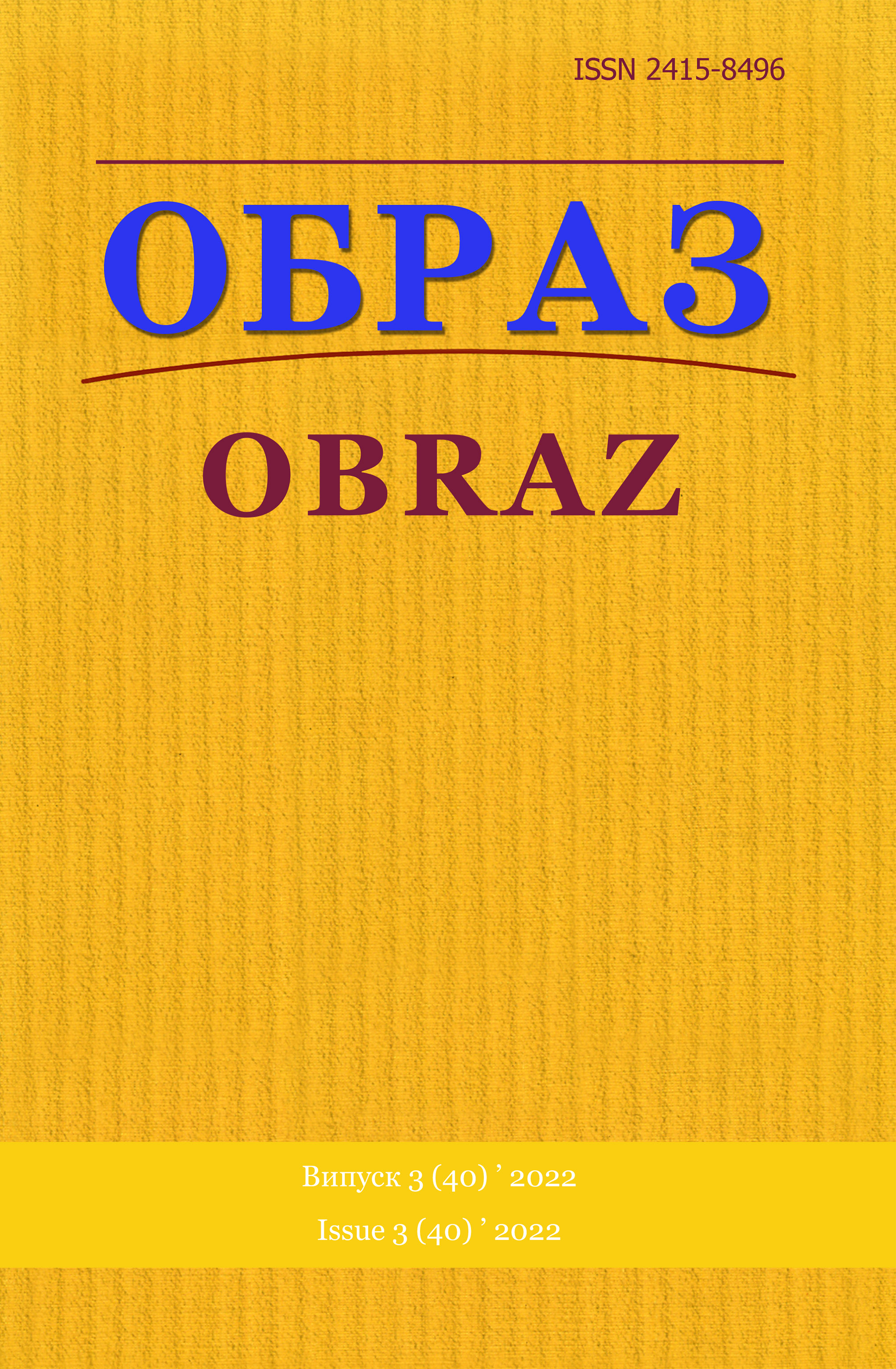Abstract
Introduction. Since the first days of the war, Ukrainian journalists have become the ones who record russia’s crimes against Ukraine. This fixation happened and is happening primarily through the stories of citizens who suffered from the actions of the russian occupiers, that is, through materials containing a narrative part. The period of martial law had a significant impact
on the format priorities of the Ukrainian media, and these changes require a detailed study and discussion. In particular, this applies to «Suspilne Sumy», which has become a flagship among regional broadcasters, through which Ukraine and the world learned about what happened during the occupation of the Sumy region, and learn what is happening now.
Relevance of the study. The study of the narrativization of the news video content of the «Suspilne Sumy» during the period of martial law is relevant, as the narrative discourse enables the media to record war crimes through the stories of citizens.
Methodology. The research used such methods as content analysis, descriptive method, methods of synthesis, and classification. In order to achieve the results, the materials of the YouTube version of the «Suspilne Sumy» news releases in the period from 02.24.2022 to 10.20.2022 were watched.
Results. The analysis of the video content of «Suspilne Sumy» during the war period shows that the signs of narrative are recorded in most materials. This applies to such genres as reportage and life story (narration from the first person). In stories with narrative elements, we observe a combination of factual material with artistic details, construction of a plot from scenes, telling
stories through the mouths of characters – from the first person, saturation with dialogues, and appeal to the emotional sphere. The viewer can make his own conclusions about the facts. In this way, the mass media tries to attract attention, and create close emotional contact in the perception of materials and trust in the presented information, which, in turn, contributes to the growth of authority and the expansion of the audience. The increased attention of viewers to materials with narrative features is proved by the fact that they show the highest rates of views on the YouTube channel of «Suspilne Sumy».
Conclusions. We see a comparative analysis of the news video content of various «Suspilne Sumy» branches on the subject of the use of narrative, which will provide an opportunity to trace trends in the use of this format of information presentation as promising areas of further research.
References
1. Babenko, V. (2013), «Narrative text in news format», Tele- ta radiozhurnalistyka [Television and radio journalism], iss. 12, pp. 265–273.
2. Hlushchenko, А.H., Hudoshnyk, О.V. (2020), «Traditions of narrative journalism in Ukrainian literary reporting», Masova komunikaciya u globalnomu ta nacionalnomu vymirax [Mass communication in global and national dimensions], iss. 13, pp. 27–31.
3. Buromenskyi, M., Shturkhetskyi, S., Bilz, E., Betz, M., Shupp, C., Kazanzhy, Z. (2016), Journalism in conflict: best practices and recommendations : tutorial, ВАІТЕ Inc., Kyiv, 118 p.
4. Ivanova, О.А., Chervinchuk, А.О. (2020), «Modern Ukrainian war documentaries: author and author’s strategy», Scientific developments of European countries in the area of philological researches : Collective monograph, Izdevnieciba «Baltija Publishing», Riga, pp. 221–237, available at: https://doi. org/10.30525/978-9934-588-56-3.1.13.
5. Karpylenko, V.А. (2014), «The use of narratives in the cognitive structures of news», Informacijne suspilstvo [Information society], iss. 20, pp. 9–11, available at: http://nbuv.gov.ua/UJRN/ is_2014_20_4/.
6. Information broadcasting standards of the public joint-stock company «National Public Television and Radio Company of Ukraine», available at: https://tv.suspilne.media/uploads/assets/ files/PBC/standarty_iformmovlennia.pdf.
7. Tytarenko, М. «American New Journalism: Terra In/cognita», Mediakrytyka [Media criticism], available at: https://www.mediakrytyka.info/za-scho-krytykuyut-media/amerykanskyy-novyyzhurnalizm-terra-incognita.html.
8. Harytonenko, О.А. (2018), «Storytelling as a genre, narrative and means of architecture in journalism: content, varieties, modern interpretations, Modern mass media space: realities and prospects of development: proceedings of the 3rd Ukrainian scientific and practical conference, Vinnytsya, pp. 243–249.
9. Hvorostyna, О.V. (2017), «Strategies of transmedia storytelling in journalism», Naukovi zapysky Instytutu zhurnalistyky [Scientific notes of the Institute of Journalism], vol. 1 (66), pp. 98–105.
10. Shurma, S.H. (2016), «The concept of narrative strategy in journalistic discourse», Naukovyj visnyk Mizhnarodnogo gumanitarnogo universytetu. Seriya: Filologiya [Scientific Dispatch of the International Humanitarian University. Series: Philology], no. 22, pp. 205–208, available at: http:// nbuv.gov.ua/UJRN/Nvmgu_filol_2016_22_58.
11. Yufereva, O. (2013), «Narrative trends of modern Ukrainian travel journalism in a sociocultural perspective (based on the material of the magazine «Mandry»)», Naukovi zapysky Instytutu zhurnalistyky [Scientific notes of the Institute of Journalism], vol. 53, pp. 51–55.
12. Dan P. McAdams, «The Psychology of Life Stories», Review of General Psychology, no. 5 (2), pp. 100–122, available at: https://journals.sagepub.com/doi/full/10.1037/1089-2680.5.2.100.
13. Van Krieken Kobie & Sanders José (2016), «Framing narrative journalism as a new genre: A case study of the Netherlands», Journalism, no. 18 (10), pp. 1364–1380.
14. Vanoost, M. (2013), «Defining Narrative Journalism through the concept of plot», Diegesis 2, no. 2, available at: https://www.diegesis.uni-wuppertal.de/index.php/diegesis/article/view/135/167.

This work is licensed under a Creative Commons Attribution 4.0 International License.

